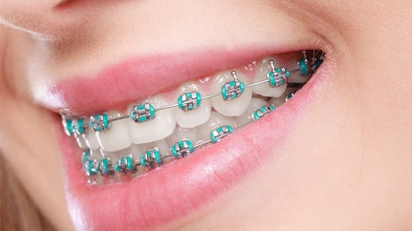
Orthodontic Treatment
Orthodontic treatment involves the diagnosis, prevention, and correction of misaligned teeth and jaws. It is often sought to improve both the function and appearance of the teeth and bite, addressing issues like crowding, spacing, overbites, underbites, and crooked teeth. Orthodontics not only enhances aesthetics but also contributes to better oral health by making teeth easier to clean and reducing the risk of tooth decay, gum disease, and excessive wear. Consist of metal brackets that are attached to the teeth and connected by a wire. The wire is periodically adjusted to gradually move the teeth into the desired position.
Dental Braces
Braces apply continuous pressure over time to gradually move teeth into the desired position. They are commonly used to treat a variety of dental issues, including crooked teeth, overcrowding, gaps, overbites, underbites, and crossbites. Consist of metal brackets that are glued to each tooth and connected by a wire, which is periodically adjusted to move the teeth. These braces are placed on the inside (lingual side) of the teeth, making them invisible from the outside. Can be metal or ceramic, and they generally require fewer adjustments, making visits to the orthodontist quicker and less frequent.
